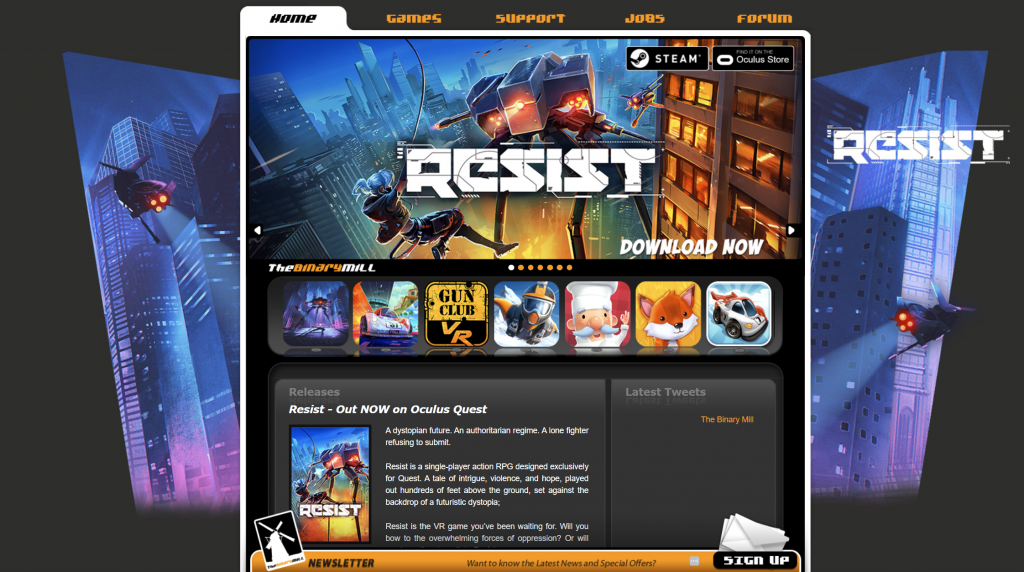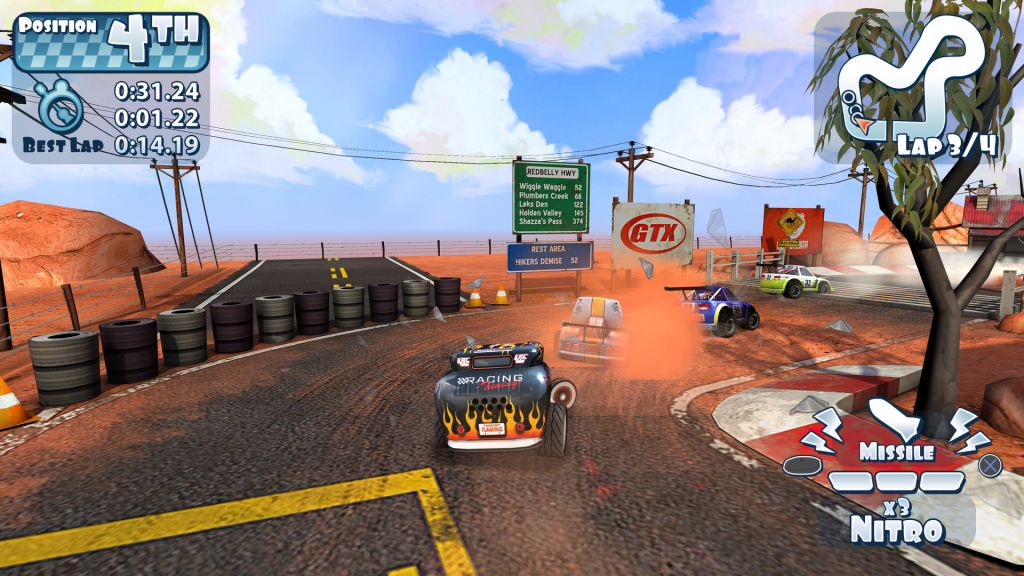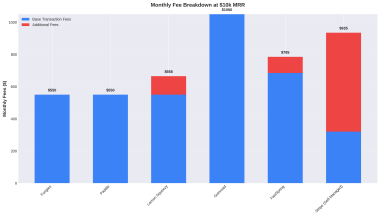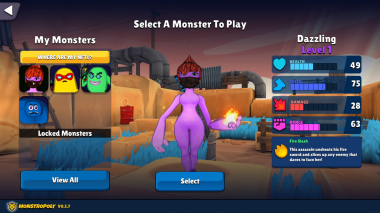Marketing and Game Development: A Parallel Approach
Just as in game development, your marketing should be strategically planned and scheduled well ahead of time. This includes planning for post-launch activities. After mastering the basics from Chapter 2, you’re ready to craft your strategy, encompassing sales objectives, critical marketing moments, budgets, events, and methods.

Chapter Objective: Master the art of constructing a game marketing blueprint, pinpointing crucial details that influence its formulation.
When Should You Start Considering Marketing? The answer is immediate! Initiate your marketing thought process concurrently with your game’s development phase.
Quick Tip: Incorporate marketing strategies during the early game development phases. By integrating marketing insights from the onset, you ensure a greater chance of success for your game. Start your journey by evaluating several fundamental aspects.
Zeroing in on Your Plan’s Core Elements: Anchor your marketing strategy on these foundational principles:
Defining the Target Audience: Who are they currently? Who do you intend them to be? Recognizing your game’s potential audience and verifying its feasibility will steer both your game’s design and marketing trajectory. Ponder crucial questions about your prospective users: Are your sights set on non-gamers like Solitaire players, casual gamers reminiscent of Angry Birds enthusiasts, or die-hard fans akin to Call of Duty followers? Is your game tailored for kids or adults? Do you target RPG aficionados or FPS lovers? Is the tone light-hearted or gravely serious? The answers might realign your game’s design and objectives.
Choosing Your Game’s Target Audience and Release Dynamics
Are you aiming to create a game for a vast audience with potentially high sales, or do you have a niche genre in mind that might have a more limited sales scope? Early market and audience assessments can help pinpoint projects with optimal success chances upon release.
Quick Insight: Pin down your game’s target demographics and their unique selling points right from the start. Visual reminders in your workspace can help keep this focus intact.
- What Makes Your Game Unique? Incorporate distinctive and captivating features in your game from the outset to facilitate the marketing journey. Recognize potential highlights, be it an innovative gameplay twist, a novel mechanic that capitalizes on new technology, arresting visuals, captivating protagonists, engaging narratives, or more. Moreover, these unique points should resonate with your intended audience. To gauge their effectiveness, you might hold casual or formal feedback sessions early on with various acquaintances or industry professionals.
- Setting the Launch Date: When to Roll Out Your Game Your marketing strategy can either dictate your game’s launch date or vice versa. For instance, a children’s game scheduled for a spring release might incorporate Easter elements to sync with the season. Or a game celebrating the Olympics might be timed for the event’s commencement. Seasonal themes might also inspire new game concepts, like a Valentine’s Day challenge or a unique game for Father’s or Mother’s Day. Such themes can also serve as the basis for updates and additional content post-launch.
Consider unconventional holidays as well, like the “Talk Like a Pirate Day” which sparks interest every September 19. Such offbeat events can sometimes serve as better marketing hooks than popular holidays. For instance, a game themed on World War I might be timed for the Treaty of Versailles’s centennial commemoration.
Note of Caution: The market is flooded with Christmas-themed games every December!
- Declaration Date: When to Introduce Your Game to the World The reveal date for your game (distinct from its release) is contingent on your team’s profile, the studio’s stature, and the project itself. While this announcement typically happens before the game’s release, its strategy must be tailored to the specific circumstances. For instance, a debut game from lesser-known developers would require a different announcement approach than a sequel from a reputed studio with a dedicated fan base.
Tip: While finalizing your game’s announcement date, account for factors such as:
• Seasonal trends
• Pertinent ongoing news
• Significant industry happenings.
When devising your game’s announcement strategy, there are pivotal considerations to ensure your message stands out.
Seasonal Surge: The months of November and December are often saturated with game releases, especially big-ticket titles. Both gamers and the media concentrate on the latest, most-awaited games during this period. Hence, revealing your project amidst this might dilute its visibility.
Major Sale Seasons: Factor in popular sales seasons while planning your game’s launch. Releasing your game around major sale events like Steam’s summer sale or during significant holiday sales on platforms like PlayStation or Xbox might adversely affect your launch momentum. It’s a good practice to avoid these high-traffic windows and liaise with platform representatives to gain insights on their promotional schedules.
April’s Fool: Think twice before making vital announcements on April Fool’s Day, the internet’s renowned day for pranks. Most communications on this day are met with skepticism, reducing the chances of being taken seriously.
Industry Events: Game announcements often converge around significant industry events, offering the advantage of heightened media attention. However, this also means vying for coverage amidst myriad other announcements. A strategic move would be to break your news a few weeks before a major event, ensuring focused media attention. Remember, post-event, the media may be swamped with other commitments, diminishing your coverage opportunities.
Stay Current: Keep an eye on global happenings while shaping your announcement strategy. Being agile and ready to tweak your plans is essential, especially when unforeseen events might overshadow your announcement.
The Announcement Mechanics: Ponder on how you’ll break the news. Is there potential for a teaser on social media, leading up to a grand reveal later? Could you collaborate with a media outlet for an exclusive scoop? If budgets permit, consider hiring PR experts who might have better media connections. Also, evaluate the efficacy of a press release.
Supporting Your Announcement: Merely informing the world about your upcoming game isn’t enough. Enhance your announcement with compelling content like the game’s title/logo, a concise description, genre, screenshots, concept arts, or trailers. The media greatly values visual aids to complement their stories. Ensure you’re equipped to satiate their needs.
Designing Your Game’s Marketing Roadmap
When shaping the marketing trajectory for your game, consider the following aspects:
- Generating Buzz, Maintaining Curiosity, and Reaching a Crescendo
- Varied Strategies: The technique employed to create awareness and heighten interest can differ depending on the game and its developer. As discussed earlier, the strategy to announce a project from an established developer can be starkly different from a newcomer’s inaugural game introduction.
- Immediate Impact: Some games opt for an immediate buzz upon announcement. This strategy seeks an early attention-grab, often with an engaging trailer, a collection of refined screenshots, in-depth game insights, and other compelling content, typically just a few months ahead of the projected release.
- Gradual Build-up: In contrast, some games prefer a gradual buildup. Rather than revealing everything upfront, they unveil information in stages: an initial announcement, followed by the first set of screenshots, then more game details, culminating in a captivating video. This staged reveal requires a well-choreographed plan to keep both the media and gamers engaged, keeping them hungry for more until the game’s launch.
- Interest Accumulation Curve: Visualize a prelaunch-to-launch timeline chart that tracks interest generation. If you adopt a gradual reveal strategy, focus on molding this interest curve so that it peaks just when your game is set to release, maximizing potential sales.

What’s the optimal promotional timeline for your game? Some initiate their promotional activities a year or even longer before the anticipated launch, while others begin just months ahead. A prolonged timeline might be suitable for expansive games with rich content and detail.
Starting too early can make it tough to maintain momentum and excitement over a prolonged period. Conversely, initiating promotions too close to your launch date might not give your game adequate time to resonate with your intended audience and media outlets.
Some opt to make their initial public announcements just days before the game’s release, or sometimes even post-launch. This strategy may face obstacles in garnering attention, as media often prioritize fresh and current content.
Always incorporate some flexibility into your timeline; even the most meticulously planned schedules can encounter unexpected hurdles.
Regardless of your chosen strategy, you can reach out to journalists before your announcement date, providing them with exclusive news and materials. You can ask them to withhold the information until your designated official reveal date.
Building Excitement as Your Game Nears Release
When outlining your game’s promotional strategy, consider the most compelling content that can serve as the cornerstone of your efforts.
Tip: Set aside your most gripping content to release when you aim to hit peak engagement, especially as the game nears its launch. Think of attention-grabbing videos, major announcements, and dramatic reveals!
Here are some significant content ideas to infuse in your promotional strategy:
- Major Announcements/Reveals: Release intriguing updates about in-game content, novel features, or expansions. Stir excitement with announcements about your game’s projected release date. Begin with a general timeframe like “Winter 20XX” before narrowing down to a specific date. This method also safeguards you against any potential delays. Often, the game’s price is revealed alongside the release date, and it’s common to start preorders simultaneously.
- Videos:
- Videos can be a goldmine, showcasing the essence of your game. Prioritize quality and ensure it aligns with your game’s ambiance before releasing.
- Use videos to announce crucial details like the release date or pricing.
- Your trump card might be an enthralling new trailer released just as the game goes live.
- Consider serial trailers or immersive gameplay clips (highlighting key characters, motifs, or features), or even offering a glimpse into the initial gameplay moments.
- Behind-the-scenes footage, interviews, and live streams can further amplify intrigue.
- Screenshots: Strategize on sets of screenshots to release periodically, showcasing various elements—settings, characters, and scenarios.
- Concept Art: While actual gameplay visuals are preferred, concept art can be invaluable, especially in the early stages when game visuals aren’t polished yet. If you don’t typically produce concept art, think about crafting some for preliminary marketing drives, portraying the envisioned artistry of the game.
- Events: Align your marketing efforts with significant industry events or regional shows leading up to your game’s launch. Besides showcasing your game to attendees, these events can be avenues to engage with the media and obtain coverage.
- Iconic Art: For some games, a standout hero image can generate buzz. Picture this as your game’s emblematic poster or cover art. While it may not be apt for every game, when it is, it can be a vital part of your promotional schedule.
- Playable Builds: As you near completion, consider sharing playable versions of your game with influencers. Whether it’s at an event, personal press meets, or exclusive journalist previews, these builds can catalyze further media exposure via previews or comprehensive reviews.
Look to the realms of film and television marketing for innovative ideas and insights to elevate your campaign. Dive into captivating movie posters, trailers, print advertisements, and teasers. Understand how renowned franchises leverage social media and make key announcements, such as casting reveals. You might find valuable cues from marketing strategies across different sectors! Chapter 8 delves deeper into the best practices and pitfalls of marketing assets.
Case Study: Mill’s Mini Motor Racing
Gaming companies, whether big or small, often make the mistake of concentrating almost exclusively on the launch phase. This narrow focus can overlook the potential benefits of a sustained marketing approach. Take, for example, Mini Motor Racing by The Binary Mill. Their deliberate planning of post-launch initiatives not only maintained the game’s momentum but also led to considerable returns on their investment.

Mini Motor Racing marked a departure from the norm for the Australian studio, introducing a fresh series that wasn’t rooted in any previous franchises or licenses. This game delved into a novel genre for them—an isometric, arcade-style racing game. Previously, the studio had ventured into projects like a sci-fi shooter, collaborated on apps with Penny Arcade and Leisure Suit Larry’s Al Lowe, and developed a realistic gun simulator. The team strategically chose mobile platforms for Mini Motor Racing’s launch, leveraging their success from previous titles.

The game uniquely blended engaging design to ensure a fulfilling primary gaming experience and incorporated in-app purchases for unlocking features and enhancements—creating an avenue for additional revenue. This case study narrows down on the game’s initial release on iOS devices, such as the iPhone, iPod Touch, and iPad.

The Binary Mill orchestrated a comprehensive marketing strategy for Mini Motor Racing that spanned both its launch and post-launch phases. Their approach encompassed:
1. Launch Timing and Seasonal Integration:
- Targeting the bustling fourth quarter for the game’s release, The Binary Mill curated seasonal content, positioning the game distinctively amid the competitive end-of-year launch rush.
2. Pricing Strategy:
- With an eye on the competition, the studio priced the game to not only be competitive but also to allow for future promotional reductions:
- iPhone version: $1.99 USD
- iPad version: $2.99 USD
3. Promotional Schedule:
- Price Drop: Three months post-launch, they introduced a price promo:
- Smartphone version: Discounted to $.99 USD from $1.99
- Tablet version: Reduced to $1.99 USD from $2.99
- Major Update: Six months after its debut, a substantial 1.5 game update was rolled out. This enhancement, initially intended to be a minor tweak, was amplified both in content and its promotional backing, leading to a surge in sales.
- Free Promotion: Seven months into its journey, Mini Motor Racing was featured as a “Free App of the Day”. The consequent spike in downloads was monetized effectively through in-app purchases.
- Second Holiday Season Promos: As the game approached its first anniversary, coinciding with winter festivities, the team refreshed content from its launch. Notable changes included a holiday-centric app icon, showcasing the festive track in the game, and an immersive snow globe effect on the start menu, with swirling snowflakes responding to the device’s movements.
This strategic timeline and focused marketing approach contributed significantly to the game’s success.
For the studio, Mini Motor Racing, as a fresh franchise, proved to be a hit. In its inaugural year, the game clocked in millions of downloads across all platforms and paved the way for a series of successful sequels under the Mini Motor Racing banner. Following its debut on iOS, the game expanded its reach to Android, PC/Mac, and even made its mark in traditional arcades with physical setups!
Suggested Activities:
- Draft a preliminary marketing strategy for your upcoming game using the guidelines from this chapter.
- Analyze and note the marketing methods of games that are currently launching. Are their strategies effective?
- For the top-performing games at present, which aspects of their promotional blueprint seem to resonate most? Can you deduce their marketing strategy based on the visible campaign elements?






